RBS 2010 Annual Report Download - page 151
Download and view the complete annual report
Please find page 151 of the 2010 RBS annual report below. You can navigate through the pages in the report by either clicking on the pages listed below, or by using the keyword search tool below to find specific information within the annual report.-
 1
1 -
 2
2 -
 3
3 -
 4
4 -
 5
5 -
 6
6 -
 7
7 -
 8
8 -
 9
9 -
 10
10 -
 11
11 -
 12
12 -
 13
13 -
 14
14 -
 15
15 -
 16
16 -
 17
17 -
 18
18 -
 19
19 -
 20
20 -
 21
21 -
 22
22 -
 23
23 -
 24
24 -
 25
25 -
 26
26 -
 27
27 -
 28
28 -
 29
29 -
 30
30 -
 31
31 -
 32
32 -
 33
33 -
 34
34 -
 35
35 -
 36
36 -
 37
37 -
 38
38 -
 39
39 -
 40
40 -
 41
41 -
 42
42 -
 43
43 -
 44
44 -
 45
45 -
 46
46 -
 47
47 -
 48
48 -
 49
49 -
 50
50 -
 51
51 -
 52
52 -
 53
53 -
 54
54 -
 55
55 -
 56
56 -
 57
57 -
 58
58 -
 59
59 -
 60
60 -
 61
61 -
 62
62 -
 63
63 -
 64
64 -
 65
65 -
 66
66 -
 67
67 -
 68
68 -
 69
69 -
 70
70 -
 71
71 -
 72
72 -
 73
73 -
 74
74 -
 75
75 -
 76
76 -
 77
77 -
 78
78 -
 79
79 -
 80
80 -
 81
81 -
 82
82 -
 83
83 -
 84
84 -
 85
85 -
 86
86 -
 87
87 -
 88
88 -
 89
89 -
 90
90 -
 91
91 -
 92
92 -
 93
93 -
 94
94 -
 95
95 -
 96
96 -
 97
97 -
 98
98 -
 99
99 -
 100
100 -
 101
101 -
 102
102 -
 103
103 -
 104
104 -
 105
105 -
 106
106 -
 107
107 -
 108
108 -
 109
109 -
 110
110 -
 111
111 -
 112
112 -
 113
113 -
 114
114 -
 115
115 -
 116
116 -
 117
117 -
 118
118 -
 119
119 -
 120
120 -
 121
121 -
 122
122 -
 123
123 -
 124
124 -
 125
125 -
 126
126 -
 127
127 -
 128
128 -
 129
129 -
 130
130 -
 131
131 -
 132
132 -
 133
133 -
 134
134 -
 135
135 -
 136
136 -
 137
137 -
 138
138 -
 139
139 -
 140
140 -
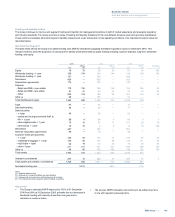 141
141 -
 142
142 -
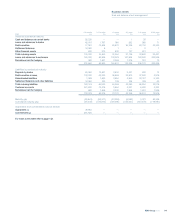 143
143 -
 144
144 -
 145
145 -
 146
146 -
 147
147 -
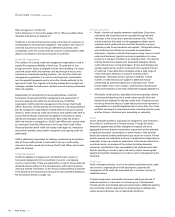 148
148 -
 149
149 -
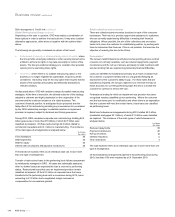 150
150 -
 151
151 -
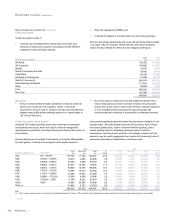 152
152 -
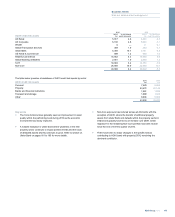 153
153 -
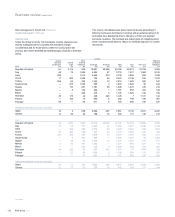 154
154 -
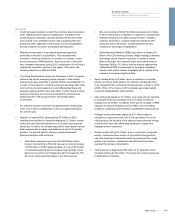 155
155 -
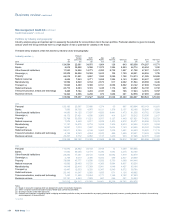 156
156 -
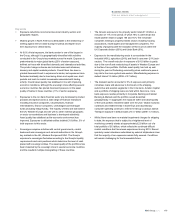 157
157 -
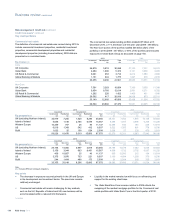 158
158 -
 159
159 -
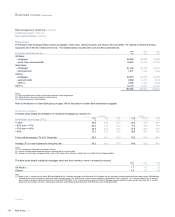 160
160 -
 161
161 -
 162
162 -
 163
163 -
 164
164 -
 165
165 -
 166
166 -
 167
167 -
 168
168 -
 169
169 -
 170
170 -
 171
171 -
 172
172 -
 173
173 -
 174
174 -
 175
175 -
 176
176 -
 177
177 -
 178
178 -
 179
179 -
 180
180 -
 181
181 -
 182
182 -
 183
183 -
 184
184 -
 185
185 -
 186
186 -
 187
187 -
 188
188 -
 189
189 -
 190
190 -
 191
191 -
 192
192 -
 193
193 -
 194
194 -
 195
195 -
 196
196 -
 197
197 -
 198
198 -
 199
199 -
 200
200 -
 201
201 -
 202
202 -
 203
203 -
 204
204 -
 205
205 -
 206
206 -
 207
207 -
 208
208 -
 209
209 -
 210
210 -
 211
211 -
 212
212 -
 213
213 -
 214
214 -
 215
215 -
 216
216 -
 217
217 -
 218
218 -
 219
219 -
 220
220 -
 221
221 -
 222
222 -
 223
223 -
 224
224 -
 225
225 -
 226
226 -
 227
227 -
 228
228 -
 229
229 -
 230
230 -
 231
231 -
 232
232 -
 233
233 -
 234
234 -
 235
235 -
 236
236 -
 237
237 -
 238
238 -
 239
239 -
 240
240 -
 241
241 -
 242
242 -
 243
243 -
 244
244 -
 245
245 -
 246
246 -
 247
247 -
 248
248 -
 249
249 -
 250
250 -
 251
251 -
 252
252 -
 253
253 -
 254
254 -
 255
255 -
 256
256 -
 257
257 -
 258
258 -
 259
259 -
 260
260 -
 261
261 -
 262
262 -
 263
263 -
 264
264 -
 265
265 -
 266
266 -
 267
267 -
 268
268 -
 269
269 -
 270
270 -
 271
271 -
 272
272 -
 273
273 -
 274
274 -
 275
275 -
 276
276 -
 277
277 -
 278
278 -
 279
279 -
 280
280 -
 281
281 -
 282
282 -
 283
283 -
 284
284 -
 285
285 -
 286
286 -
 287
287 -
 288
288 -
 289
289 -
 290
290 -
 291
291 -
 292
292 -
 293
293 -
 294
294 -
 295
295 -
 296
296 -
 297
297 -
 298
298 -
 299
299 -
 300
300 -
 301
301 -
 302
302 -
 303
303 -
 304
304 -
 305
305 -
 306
306 -
 307
307 -
 308
308 -
 309
309 -
 310
310 -
 311
311 -
 312
312 -
 313
313 -
 314
314 -
 315
315 -
 316
316 -
 317
317 -
 318
318 -
 319
319 -
 320
320 -
 321
321 -
 322
322 -
 323
323 -
 324
324 -
 325
325 -
 326
326 -
 327
327 -
 328
328 -
 329
329 -
 330
330 -
 331
331 -
 332
332 -
 333
333 -
 334
334 -
 335
335 -
 336
336 -
 337
337 -
 338
338 -
 339
339 -
 340
340 -
 341
341 -
 342
342 -
 343
343 -
 344
344 -
 345
345 -
 346
346 -
 347
347 -
 348
348 -
 349
349 -
 350
350 -
 351
351 -
 352
352 -
 353
353 -
 354
354 -
 355
355 -
 356
356 -
 357
357 -
 358
358 -
 359
359 -
 360
360 -
 361
361 -
 362
362 -
 363
363 -
 364
364 -
 365
365 -
 366
366 -
 367
367 -
 368
368 -
 369
369 -
 370
370 -
 371
371 -
 372
372 -
 373
373 -
 374
374 -
 375
375 -
 376
376 -
 377
377 -
 378
378 -
 379
379 -
 380
380 -
 381
381 -
 382
382 -
 383
383 -
 384
384 -
 385
385 -
 386
386 -
 387
387 -
 388
388 -
 389
389 -
 390
390 -
 391
391 -
 392
392 -
 393
393 -
 394
394 -
 395
395 -
 396
396 -
 397
397 -
 398
398 -
 399
399 -
 400
400 -
 401
401 -
 402
402 -
 403
403 -
 404
404 -
 405
405 -
 406
406 -
 407
407 -
 408
408 -
 409
409 -
 410
410 -
 411
411 -
 412
412 -
 413
413 -
 414
414 -
 415
415 -
 416
416 -
 417
417 -
 418
418 -
 419
419 -
 420
420 -
 421
421 -
 422
422 -
 423
423 -
 424
424 -
 425
425 -
 426
426 -
 427
427 -
 428
428 -
 429
429 -
 430
430 -
 431
431 -
 432
432 -
 433
433 -
 434
434 -
 435
435 -
 436
436 -
 437
437 -
 438
438 -
 439
439 -
 440
440 -
 441
441 -
 442
442 -
 443
443 -
 444
444 -
 445
445
 |
 |

Credit risk mitigation*
The Group employs a number of structures and techniques to mitigate
credit risk. Netting of debtor and creditor balances will be undertaken in
accordance with relevant regulatory and internal policies; exposure on
over-the-counter derivative and secured financing transactions is further
mitigated by the exchange of financial collateral and documented on
market standard terms. Further mitigation may be undertaken in a range
of transactions, from retail mortgage lending to large wholesale financing,
by structuring a security interest in a physical or financial asset; credit
derivatives, including credit default swaps, credit linked debt instruments,
and securitisation structures; and guarantees and similar instruments (for
example, credit insurance) from related and third parties are used in the
management of credit portfolios, typically to mitigate credit concentrations
in relation to an individual obligor, a borrower group or a collection of
related borrowers.
The use and approach to credit risk mitigation varies by product type,
customer and business strategy. Minimum standards applied across the
Group cover: general requirements, including acceptable credit risk
mitigation types and any conditions or restrictions applicable to those
mitigants; the means by which legal certainty is to be established,
including required documentation and all necessary steps required to
establish legal rights; acceptable methodologies for the initial and any
subsequent valuations of collateral and the frequency with which they are
to be revalued (for example, daily in the trading book); actions to be taken
in the event the current value of mitigation falls below required levels;
management of the risk of correlation between changes in the credit risk
of the customer and the value of credit risk mitigation; management of
concentration risks, for example, setting thresholds and controls on the
acceptability of credit risk mitigants and on lines of business that are
characterised by a specific collateral type or structure; and collateral
management to ensure that credit risk mitigation remains legally effective
and enforceable.
Credit risk measurement
Credit risk models are used throughout the Group to support the
quantitative risk assessment element of the credit approval process,
ongoing credit risk management, monitoring and reporting and portfolio
analytics. Credit risk models used by the Group may be divided into three
categories, as follows.
Probability of default/customer credit grade (PD)
These models assess the probability that a customer will fail to make full
and timely repayment of their obligations. The probability of a customer
failing to do so is measured over a one year period through the economic
cycle, although certain retail scorecards use longer periods for business
management purposes.
Wholesale businesses: as part of the credit assessment process, each
counterparty is assigned an internal credit grade derived from a default
probability. There are a number of different credit grading models in use
across the Group, each of which considers risk characteristics particular
to that type of customer. The credit grading models score a combination
of quantitative inputs (for example, recent financial performance) and
qualitative inputs, (for example, management performance or sector
outlook).
Retail businesses: each customer account is separately scored using
models based on the most material drivers of default. In general,
scorecards are statistically derived using customer data. Customers are
assigned a score, which in turn is mapped to a probability of default. The
probabilities of default are used to group customers into risk pools. Pools
are then assigned a weighted average probability of default using
regulatory default definitions.
Exposure at default
Facility usage models estimate the expected level of utilisation of a credit
facility at the time of a borrower’s default. For revolving and variable draw
down type products which are not fully drawn, the exposure at default
(EAD) will typically be higher than the current utilisation. The
methodologies used in EAD modelling provide an estimate of potential
exposure and recognise that customers may make more use of their
existing credit facilities as they approach default.
Counterparty credit risk exposure measurement models are used for
derivative and other traded instruments where the amount of credit risk
exposure may be dependent upon one or more underlying market
variables such as interest or foreign exchange rates. These models drive
internal credit risk activities such as limit and excess management.
Loss given default
These models estimate the economic loss that may be experienced (the
amount that cannot be recovered) by the Group on a credit facility in the
event of default. The Group’s loss given default (LGD) models take into
account both borrower and facility characteristics for unsecured or
partially unsecured facilities, as well as the quality of any risk mitigation
that may be in place for secured facilities, plus the cost of collections and
atime discount factor for the delay in cash recovery.
149RBS Group 2010
Business review
Risk and balance sheet management
